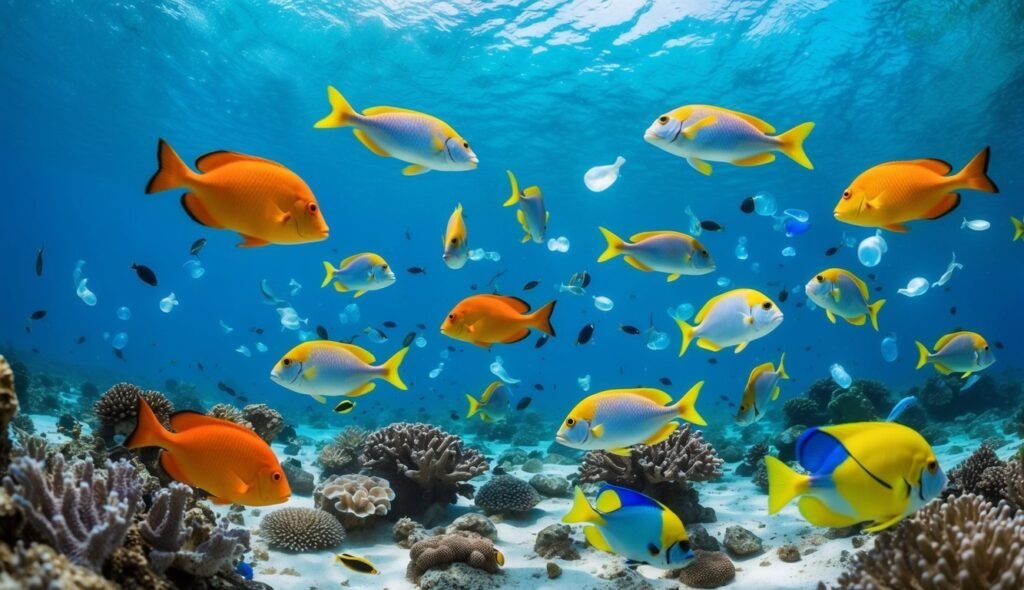A new study from researchers at Portland State University (PSU) has revealed that microplastics – tiny particles from clothing, packaging, and various plastic products – are infiltrating the fish that humans eat.
This pressing issue highlights the urgent need for innovative technologies and strategies aimed at reducing the pollution caused by microfibers in our environment.
Research Focus on Microplastics
Building on previous research that investigated microplastics in bivalves like Pacific oysters and razor clams, the team at PSU’s Applied Coastal Ecology Lab turned their focus to fish and crustaceans commonly found on dinner plates.
Elise Granek, a professor of environmental science and management, led the research alongside graduate student Summer Traylor, who earned her master’s degree in environmental management in 2022, and undergraduate student Marilyn Duncan, a 2024 graduate.
Their mission was to fill in the gaps regarding microplastic contamination in Oregon’s finfish and shellfish, examining how contamination varied across different trophic levels and the pathways that lead to human consumption.
Traylor’s experience has paved the way for her current role with the National Oceanic and Atmospheric Administration (NOAA), while Duncan plans to continue her studies on microplastics.
Study Findings and Concerns
In their work, the researchers meticulously quantified anthropogenic particles – materials altered or created by human activity – within the edible tissues of six ecologically and culturally important fish species in Oregon: black rockfish, lingcod, Chinook salmon, Pacific herring, Pacific lamprey, and pink shrimp.
They also gauged how the location of each species in the food web impacted its level of contamination.
A comparison was drawn between samples collected from research fishing expeditions and those sold in supermarkets and seafood markets.
Collaboration with ecotoxicologist Susanne Brander from Oregon State University proved invaluable for validating suspected plastic samples.
The results, published in the journal *Frontiers in Toxicology*, uncovered 1,806 suspected particles across 180 samples, with fibers being the most frequently found, followed by fragments and films.
Among the species sampled, pink shrimp, which feed just below the water’s surface, exhibited the highest contamination levels in their edible tissues.
In contrast, Chinook salmon contained the lowest levels, with black rockfish and lingcod following closely behind.
Granek pointed out that smaller marine organisms appeared to ingest a greater number of non-nutritious anthropogenic particles.
These smaller fish and shrimp often consume zooplankton that can resemble microplastic particles, contributing to the risk of ingestion.
Interestingly, the team found that while they initially suspected that the processing of seafood could introduce more contaminants due to plastic packaging, the results varied by species.
When fish fillets and shrimp were rinsed—a common household practice—it turned out that some surface contaminants could be effectively removed.
Future Directions and Solutions
These findings indicate a worrisome level of pollutants in the body tissues of both marine and freshwater species across Oregon.
Brander expressed concern about the potential for microfibers to migrate from the digestive system into the muscle tissue, a phenomenon that could have serious implications not just for fish, but potentially for human consumers as well.
This contamination raises questions about the long-term health effects on both aquatic life and those who consume seafood regularly.
As research progresses, scientists are also investigating whether exposure to these pollutants could impact human performance, including endurance and recovery in activities like weekend warrior workouts 2025.
Understanding these risks is crucial for developing strategies to reduce pollution and protect both ecological and human health.
The researchers advocate for deeper exploration into how microplastic particles penetrate edible tissues and emphasize the need for policy changes that could help control these anthropogenic contaminants.
Traylor remarked that this study lays the groundwork for stakeholders involved in West Coast fisheries, emphasizing the significant gaps in our understanding of microplastic pollution.
While the authors do not suggest that people should stop eating seafood, Granek reminded readers that microplastics are also found in many other food items, such as bottled water, beer, and various protein sources.
The waste from products that release microplastics ultimately ends up back on our plates.
In light of these challenges, Granek’s lab is focusing on finding solutions.
She is currently leading a $1.9 million project funded by NOAA, which aims to design and test filters for washing machines, dishwashers, and dryers to catch microplastics effectively.
Additionally, a separate initiative funded by Oregon Sea Grant plans to install filters in stormwater drains in two coastal towns to evaluate their ability to trap microplastics before they contaminate local waterways.
Brander’s lab is also collaborating on this vital work.
Source: ScienceDaily

